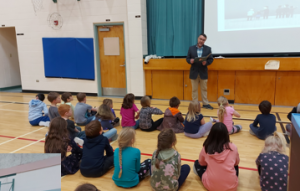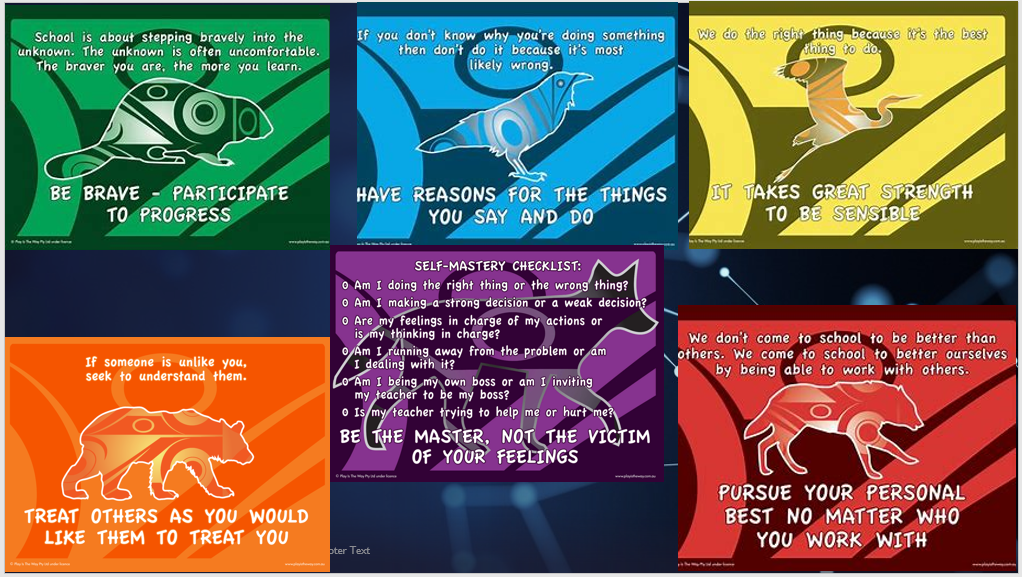I. General Information
School Name: Evelyn Dickson Elementary School
School District: SD#91 Nechako Lakes
Inquiry Team Members: Sylvia O’Meara: someara@sd91.bc.ca, Wade Fitzpatrick: wfitzpatrick@sd91.bc.ca, Becki Larsen: blarsen@sd91.bc.ca, Norma Neufeld: nneufeld@sd91.bc.ca, Ashley Kennedy: akennedy@sd91.bc.ca, Coralie Hiebert: cohiebert@sd91.bc.ca, Tori Egan: tegan@sd91.bc.ca
Inquiry Team Contact Email: Sylvia O’Meara/someara@sd91.bc.ca
II. Inquiry Project Information
Type of Inquiry: NOIIE
Grade Levels Addressed Through Inquiry: Primary (K-3)
Curricular Areas Addressed: Language Arts – Oral Language, Physical & Health Education, Other: social/emotional
Focus Addressed: Community-based learning, Core competencies (for example, critical thinking, communication, problem solving), First Peoples Principles of Learning, Growth mindset, Self-regulation, Social and emotional learning
In one sentence, what was your focus for the year? Our inquiry focus was on teaching social and emotional skills using Play is the Way, a unique program of physically interactive games, 5 guiding concepts, and specific and empowering self-reflective language.
III. Spirals of Inquiry Details
Scanning: Each primary teacher asked the four key questions to between 3 and 5 of their students. When we first did this at the start of our inquiry project, it was very hard for students to answer these questions, and many of them (especially the younger ones) needed a lot of prompting in order to provide answers. We noticed that their answers often did not include many details or explanations. While they could tell us 2 adults that they felt believed they would be a success, they struggled to explain how these adults showed that they believed in them. Students often only listed the adults that they interacted with most often in their classrooms or in the office. We noticed that most students did not have a strong connection with the larger group of adults in our building.
Focus: As a primary staff, we found a need for students to develop their social and emotional skills in order to help them thrive. We decided to help students do this by working together to implement Play is the Way. This idea came about when most of the primary teachers at our school attended a Pro-D for Play is the Way in November, and we felt that this program would fit our school’s needs, both for staff and students.
Play is the Way provides learners with opportunities to become intrinsically motivated to do the right thing without using external motivators. Play is the Way is a behaviour education (not management) program. It is not a pencil and paper program with a finite set of lesson plans, but a way of learning by doing – an experiential process that becomes a way of school life. This program gives all parties a common language, with key concepts and understandings around which to build communal responsibility for the desired outcomes of the stakeholders.
Hunch: During the previous few years, our staff and students had really missed out on being able to mix and intermingle with each other. Due to COVID restrictions we had lost out on a lot of ways in which we had previously intermingled and supported each other. Students were struggling socially/emotionally due to many of the challenges (both in and out of school) that arose during the COVID pandemic. We were seeing students struggle socially/emotionally while at school and were looking for ways to support them.
New Professional Learning: We used the Play is the Way program, specifically volumes 1 and 2. Many of our primary staff attended a Play is the Way pro-d in November, then our school held a school wide pro-d in May, which was attended by most of our staff and was a positive experience. We found it brought us together as a staff. It was so beneficial to have the chance to learn together.
Our primary staff/inquiry team met together many times over the school year to participate in a collaboration group where we discussed Play is the Way and our teaching/learning experiences. We shared resources (many story books and videos) and ideas with each other. Many of these resources we had collected were from book lists in Adrienne Gear’s Powerful Understanding resource.
Taking Action: As a team of primary teachers, we came together and supported each other to implement this program across all of our primary classrooms, through morning announcements, bi-weekly assemblies, buddy class activities, and activities within each classroom community. Our primary teachers continued to collaborate on Play is the Way throughout the year as we planned together and reflected on what we had been doing and what our next steps would be. We worked with our support staff, teachers, and admin, so that everyone was using common language and so that we were all working as a cohesive group throughout our primary community. In May we were able to host a Play is the Way pro-d with most of our school staff in attendance, including admin, teachers, and support staff.
Play is the Way introduced students to a variety of different adults within our school and helped students and staff connect in a fun and meaningful way.
Photo (above): One of our Evelyn Dickson primary wide assemblies;
our classes had the chance to get together with each other, play games,
and learn from various adults within our building.
Checking: Implementing Play is the Way at our school is a work in progress and will take some time; however, we have made a good start and are already seeing some benefits.
Some of the things that we are noticing after beginning to implement play is the way are:
-Students are using their manners more, and are better at greeting each other and the adults in our building.
-Students have been practicing their communication skills in a fun and challenging way when we play games and discuss their outcomes.
-Students recognize and have begun to build a relationship with a larger variety of adults.
-We have found it beneficial to intermingle with various classes during our primary assemblies, where students and staff learn and have fun together.
-While we need more time to continue practicing using the common language, we are already seeing how this has helped students and adults in the classroom as they refer to the Play is the Way posters, which are up in all of our school’s shared spaces and primary classrooms.
-Our entire school is listening and learning from our principal’s daily announcements, which include quotes that are directly related to our Play is the Way focus.
Photo (above): We have included the play is the way posters
and guiding principles that are up in all of our common spaces and classrooms within our school.
Students were able to provide more detailed answers to the four questions at the end of the year. Their answers showed us that they had made the Play is the Way learning meaningful to themselves, by their connections and personal stories to the key concepts posters that we had been focusing on.
Reflections/Advice: This inquiry project has shown us the importance of social/emotional development and learning. It has also shown us the power of working together as colleagues in a primary-wide team to help our students/staff grow.
We are hoping that teaching through Play is the Way within our school will continue and grow over the next few years, and will become a school-wide way of doing things with common language and goals.
We would highly recommend the Play is the Way program and professional learning opportunities.


